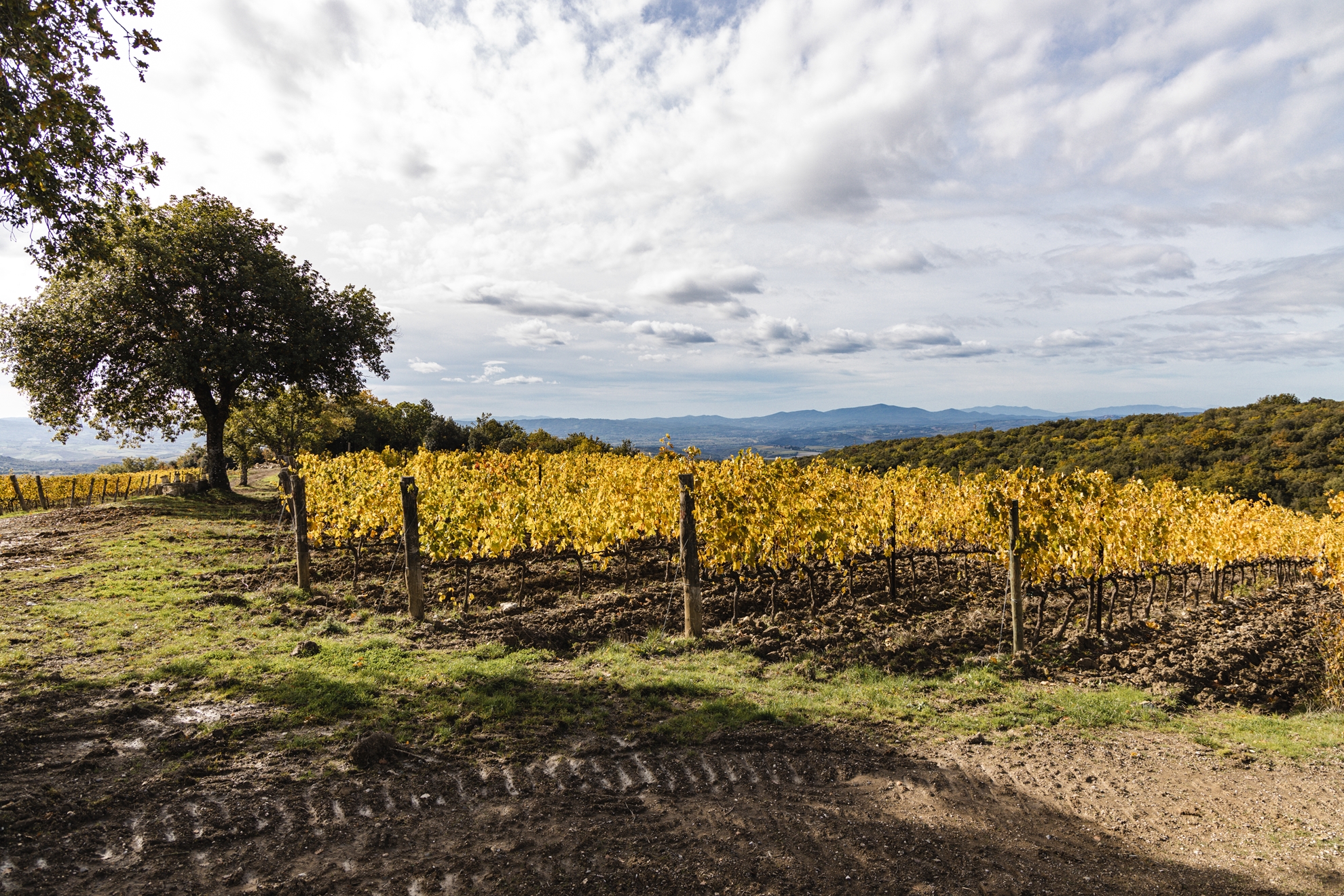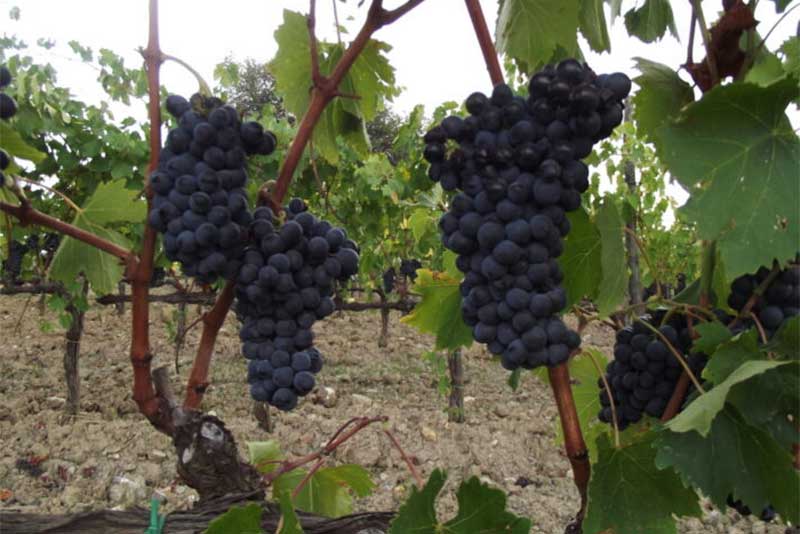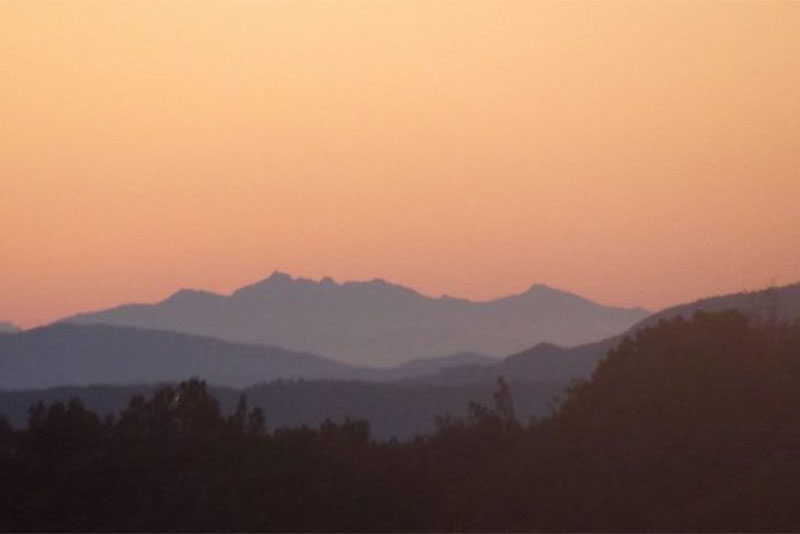-
Discover 2020 Brunello di Montalcino and 2019 Bramante Riserva
What makes a vintage truly exceptional? How does the story of a wine come to life, bottle by bottle? At SanLorenzo, these are the questions we live by, crafting wines that are more than just products. They are the result of a journey shaped by nature, tradition, and passion—and now, we’re excited to share our latest chapter with you.
In Montalcino, January is synonymous with the unveiling of new vintages. While the Consorzio officially allows Brunello di Montalcino to enter the market at the start of the year, at SanLorenzo, we take a different approach. We let our wines rest a little longer, perfecting every detail before they leave our cellars. This tradition ensures that every bottle reaches you at its absolute best, ready to tell its story.

Brunello di Montalcino Sanlorenzo How Was the 2020 Harvest?
The 2020 harvest in Montalcino was marked by balance. A mild winter and warm spring gave way to a summer of consistent sunshine, with occasional rainfall providing the necessary hydration for the vines. This harmonious weather pattern allowed the grapes to ripen steadily, resulting in wines that showcase finesse, elegance, and remarkable complexity. At SanLorenzo, every step of the harvest is conducted with care, ensuring that the true essence of our terroir is captured in each bottle.
2020 Brunello di Montalcino
What are the characteristics of the 2020 Brunello di Montalcino? This vintage is a floral masterpiece of stunning elegance. Its lighter structure enhances its finesse, while fresh acidity and structured tannins bring vitality to the palate. This harmonious profile will reward patience, evolving beautifully over time.
Critics have already celebrated its excellence:- Kerin O’Keefe awarded it 94 points, praising its alluring aromas of ripe berries, violet, spice, and eucalyptus, with a firm and savory palate ideal for aging (2028–2035).
- Raffaele Vecchione highlighted its delicate nose with notes of red plums, wild strawberries, and rose petals, complemented by juicy tannins and a luminous finish.
2019 Brunello Riserva Bramante: A Tribute to Legacy
Why is the 2019 Riserva Bramante so special? Named in honor of the estate’s founder, this Riserva embodies depth and sophistication. Crafted from our finest vineyards, it reflects our dedication to excellence and celebrates the exceptional quality of Montalcino’s terroir. With intricate layers of flavor, it offers a perfect balance of richness and vibrancy, making it a timeless addition to any collection.
This vintage has garnered outstanding reviews:
- Kerin O’Keefe awarded it 98 points, calling it “stunning and compelling,” with enticing aromas of forest floor, baked plum, and dark spice. The palate reveals Morello cherry, raspberry compote, and cake spice, supported by fine-grained tannins and bright acidity, peaking between 2029 and 2044.
- Raffaele Vecchione praised its rich sensory profile, noting red plums, wild strawberries, cedar, and hibiscus. Full-bodied and elegant, it showcases grace and remarkable personality, making it a joy to experience from 2027 onward.

SanLorenzo Montalcino Visit Us in Montalcino
How can I visit a winery in Montalcino? Planning a trip to Tuscany? Come experience the magic of Brunello firsthand. Stroll through our sunlit vineyards, explore our historic cellars, and share a glass of wine as we celebrate the beauty of Montalcino together. Whether you’re a seasoned connoisseur or a curious newcomer, you’ll find that every visit to SanLorenzo offers something truly unforgettable.
Click here to book your tasting!

Brunello di Montalcino Sanlorenzo What are you waiting for? Add Montalcino to your must-visit destinations for 2025 and start planning your unforgettable trip today!
-
A day in Montalcino
December is the perfect time to reflect on a busy year and start looking forward to the future with enthusiasm and new hopes. Here at SanLorenzo, we believe the best way to celebrate is by sharing our passion for Brunello and the Montalcino region with as many people as possible.
We want to inspire you to spend an unforgettable day in the heart of this unique land—and maybe even become ambassadors of SanLorenzo yourselves!
To help you plan, here’s how you can enjoy a perfect day in Montalcino, ending with one of our authentic tasting experiences.

Tuscany, Montalcino italian medieval village, fortress and church view at sunset. Brunello wine town.Siena, Italy. Morning: A Tour Through the Hills and a Stroll in the Village
Start your day by driving along the scenic roads that wind through Montalcino’s rolling hills, filled with the colors and scents of the Tuscan countryside. Once you arrive in the village, take a leisurely stroll through the narrow streets of the historic center and soak in its authentic atmosphere.
Don’t miss a visit to the Fortress of Montalcino, a gem of history and culture that hosts one of Italy’s first public wine shops. Here, you’ll find an incredible selection of wines, including our Brunello di Montalcino SanLorenzo
Lunch: Authentic Flavors of Tuscan Cuisine
After a delightful walk, it’s the perfect time to savor the local cuisine. You can choose from a selection of restaurants partnered with SanLorenzo, where tradition, hospitality, and authenticity come together to offer a unique dining experience. From rustic, cozy settings to venues with a modern touch, each spot showcases dishes that celebrate the typical flavors of the Val d’Orcia and Tuscan culinary traditions. A perfect break to enjoy the best this land has to offer.

Afternoon: Visit and Tasting at SanLorenzo
It’s now time to immerse yourself in the heart of our world. SanLorenzo awaits you with two new exclusive experiences for 2025:
Discover SanLorenzo Tour & Tasting: A journey through our cellar, vineyard, and current wines: Rosso di Montalcino, Brunello di Montalcino, and our elegant Rosé.
Brunello Experience: A vertical tasting of older vintages, a unique way to explore how our wines evolve over time. Thanks to our stock of historic vintages, you can discover bottles that mark special moments in your life, such as births, anniversaries, or birthdays.
Click here to book your tasting!

Brunello di Montalcino Sanlorenzo To Finish the Day
If you still have time, we recommend two incredible destinations:
- Abbazia di Sant’Antimo: A stunning abbey surrounded by nature, offering a peaceful and spiritual atmosphere that perfectly complements your visit to Montalcino.
- The Temple of Brunello: A modern cultural space celebrating the excellence and history of Brunello di Montalcino. This interactive experience will deepen your appreciation for one of the world’s most iconic wines

What are you waiting for? Add Montalcino to your must-visit destinations for 2025 and start planning your unforgettable trip today!
-
2024 Harvest
A Journey of expectations and discoveries
Once again, we have concluded the most labor-intensive yet rewarding time of our work: the harvest, the beginning of the long journey that will lead to the creation of our wines.
The 2024 harvest began with a surprisingly warm and dry winter, which led to an early bud break around mid-March. April brought favorable conditions, but the following months held some surprises. May and June were characterized by significant rainfall, although less intense than in 2023. These precipitation events, spaced out over longer intervals, allowed for precise management of phytosanitary treatments, ensuring a regular flowering at the beginning of June.
July provided ideal weather, warm but not oppressive, while August brought a heatwave that dried out the soil. However, by mid-month, some light rains began to refresh the air, followed by a return to heat at the end of August and into mid-September. This alternating weather led to a harvest around October 14-15, after a prolonged wait due to a slowdown in the maturation of the grapes.
At the beginning of September, the grapes appeared mature, but excessive heat had stalled their development, preventing them from accumulating sugar as expected. We had to be patient, and only by mid-October could we harvest grapes with adequate sugar levels. An interesting aspect of this harvest was the simultaneous progression of phenolic and sugar maturation, with the grapes looking mature on the outside while the sugar levels remained below average.
Unfortunately, the harvest faced challenges from recent rains that led to the development of mold. This necessitated meticulous selection both in the vineyard and in the winery, ensuring that only the best parcels were used for production.
After fermentation, initial analyses indicate a sugar level between 13 and 14.5 degrees, lower than the standards of previous years. However, acidity and pH levels are normal, which bodes well for a wine with a lighter structure but rich freshness and good acidity.
Fermentations in the winery were quick and consistent, with sugar depletion occurring within a week, and we are now in the maceration phase. The extraction of tannins has been satisfactory, with no green tannins, except for one tank showing a slight vegetal note.
This Brunello promises to be reminiscent of cooler vintages, such as 2013 and 2018, offering a delicate aromatic profile and well-integrated tannins. While its structure may be lighter than in previous years, it will gain elegance and freshness, making it particularly enjoyable even in its early years of aging.

-
2023 Harvest
The vintage of 2023 was characterized by a rainy period that lasted throughout the month of May and half of June. This extraordinary event caused many problems in the vineyards. Downy mildew affected both the young leaves and the small clusters, destroying approximately 70% of the production in a few days. The remaining grapes benefited from a good climate in July and August and were harvested shortly after mid-September.
Harvest date: September 25
Average yield per hectare: 12 quintals
Similar vintages: There is no vintage similar to this one. -
2022 Harvest
The 2022 vintage was characterised by a cold but dry winter followed by a mild spring with very
little rain, permitting slow but even bud growth. Bud break began early in April, and the mild
weather favoured growth, with flowering occurring as early as the end of May, 10 to 15 days
ahead of the usual dates. Temperatures of around 30 degrees, more typical of the height of
summer, were registered early in June, while July temperatures peaked at over 35 degrees. The
vines reacted well and continued to grow, staying ahead of schedule and beginning
to change colour on the 20 th of July. The drought fortunately ended with the first rain
on the 29th of July, followed by more cool, rainy days in August, though not damp
enough to have adverse effects on the health of the grapes. Good weather in
September, with a strong temperature excursion between day and night, ensured
that the grapes were ripe by the end of the month.
Harvest date 26 – 27 September
Average yield per hectare 4200 kg
Average to high quality for all vines
Annate simili 2007 2009 2011 2017 -
2021 Harvest
The 2021 vintage was characterised by drought during the summer months. After the abundant winter rains, there was no rain until autumn.
Thanks to a warm end of winter, the vines sprouted early, in mid-March, only to be forced to a sudden halt at the beginning of April due to a cold wave that created quite a few problems in some areas, but fortunately, we were spared.
June and July were mild and not too hot, favouring the growth of the vines and grapes without any problems. August saw a few heat waves that highlighted the lack of rain, but the vines held up quite well.
The harvest began normally, at the beginning of August, and closed around the 25th. Unfortunately, we were hit by an intense hailstorm on the 23rd of August, which destroyed most of the leaves and some of the grapes.
Fortunately, after this rain and hail, the weather remained fine until harvest time, allowing the affected grapes to dry out and not to mould, and the healthy grapes to complete ripening.
Harvest 7 and 8 October, little production but of excellent quality. -
Montalcino, all the Rosé wines of San Lorenzo to date
When Luciano Ciolfi from San Lorenzo suggested I taste all 6 vintages of his Rosé, I could not help but enthusiastically accept an offer which seemed extraordinary to me. I have always enjoyed drinking his wines, aware that I had before me one of the best examples of Sangiovese rosé and a wine that fits into the much broader category of the (best) rosés of Central Italy.
Montalcino, in fact: not many wineries which in 2014 vinified in pink grapes that could easily end up in the more profitable Rosso di Montalcino. A more than justified choice, it is the same market that still today rewards the world of Tuscan rosé wines more sporadically than systematically especially when it comes to prices considered premium, over 10 euros a bottle. Regional rosés are in fact part of an extraordinarily fragmented panorama, made up of extremely different wines. It is not uncommon to come across very fresh wines with an alcoholic strength of 11 degrees, pale pink in colour, and perhaps a few hundred metres away from wineries which produce a rosé of 14 degrees, light pink if not almost red. \A confusion that is reflected in the difficulty of tracing a tradition even before productive sharing. There is no doubt that looking at Tuscany, Lazio, Umbria and Marche, these are the most intense and structured rosé wines, those with the most ambition, that are the most interesting and ultimately the most decisive when trying to trace a geography of rosé wines in Central Italy.
Luciano had started a couple of years before doing tests, to make a wine “first of all that I liked, to drink in the summer, a rosé that had nothing to envy from my other wines”, and in fact a quick tasting suffices to understand just how far the world of the palest rosé wines is from his productive idea. A couple of barriques a year, salasso (or partial juice extraction) from one of the Rosso di Montalcino vats then filled with a little must taken from the others, “because it has never been a choice linked to the need to concentrate the Red”. So barrel “discharge” where the must of the Rosato ferments and rests until the end of winter without any intervention, without racking or batonnage (this was from 2014 to 2018. From 2019, Rosato di San Lorenzo has been vinified and subsequently left to partially ripen in barriques and partly in Clavier, a large ceramic container designed for wine). All this for a production that does not surpass 600 bottles per year.

Ecco quindi la degustazione, tutte le annate del Rosato di San Lorenzo: dalla prima, la 2014, a quella oggi in commercio, la 2019. In apertura e in corsivo il grado alcolico e 2 o 3 parole chiave legate agli andamenti stagionali, come li ricorda Luciano. Una nota sul colore: sono tutti vini che colpiscono per luminosità e in generale per come riescono a rifrangere la luce, catturando molte sfumature. Vini visivamente molto simili tra loro, carichi, con una accenno appena più cupo in quelli meno freschi. Tutti rosati che non lasciano troppo spazio alle esilità: sono vini dal piglio deciso, ricchi di richiami e ancor più di sapore. Andiamo.
San Lorenzo, Rosé 2014
13.5% – Cold, no sun, rainy, lots of work in the vineyard and so much selection in the cellar.Grapefruit marmalade, hints of mandarin in a context that evokes red fruit: strawberry, red currant, cherry. However just a few minutes suffice for a note of flint and very light kerosene to emerge, indicating the passage of time and the character of that particular harvest. It is a taste which, more than the others, seems to be played on a certain verticality, clearly refreshing and decisively characterising a satisfying and delicate taste. Warning: not slender as a Provençal rosé can be after many years, it is in fact equally fine and certainly suggestive in terms of flavour, so beautiful between citrus notes and a very pleasant ferrous appeal. It finishes on a note reminiscent of cherries preserved in alcohol in a tense and vibrant finish.
I liked it very much because it is fragile, evocative and subtle. A charm of its own, linked to its transience and to the fact that it is so unique within the panorama of this small tasting session.
San Lorenzo, Rosé 2015
15% – Warm and DryThe warm(er) vintage is immediately noticeable, in fact not only more mature tones emerge, even in alcohol, but more tertiary, solar notes of hay and cedar. Rose, cherry, passion fruit (?) for a taste that is rounded rather than sound. Rich, powerful and extensive, we could perhaps even use the term glyceric to define a sip that remains and which, in fact, leaves a flavoursome after-taste with a slight burning given off by heat that does not leave us indifferent. However, it is well integrated, not too out of place and, on the contrary, it adds something in terms of thickness to a Rosé that is even more than intact, to be tasted again over the years.
Of all 6, the one I found not as interesting (precisely because of a somewhat bulky alcohol content), whose limitation is to be found in an overly powerful alcohol content. Without any consideration on its balance, a wine that fits well into the style of Luciano Ciolfi’s rosés, wines that let themselves be enveloped by the warmth (and light) of the sun in a context of definite power and decisive depth.
San Lorenzo, Rosé 2016
14,5% – Warm but definitely balanced, the plants have never sufferedOpens up, in a composed fashion, with slightly citrus notes that fade into small, ripe, red fruit. Then we experience a chorus of floral shades, violet and pink in particular that slowly give way to more baritone scents, of dried herbs (including tobacco) and of wheat fields in a context of colours that remind us more of sunrise than sunset. What balance, what fabric: freshness and warmth run along the entire palate in an explosion of flavours that is perfect: not light, not powerful, just right. A particularly graceful and lightly warming finish which fades and invites you to taste again.
Reiterating how 2016 was a vintage year may perhaps be tiring in its repetition. Wow, what a wine! One of the most complete rosé wines I have tasted in recent years, a wine whose only limit is to be found in its aesthetic completeness: there is no crack, no edge, no flaw. Very nice, undoubtedly the best wine of the set.
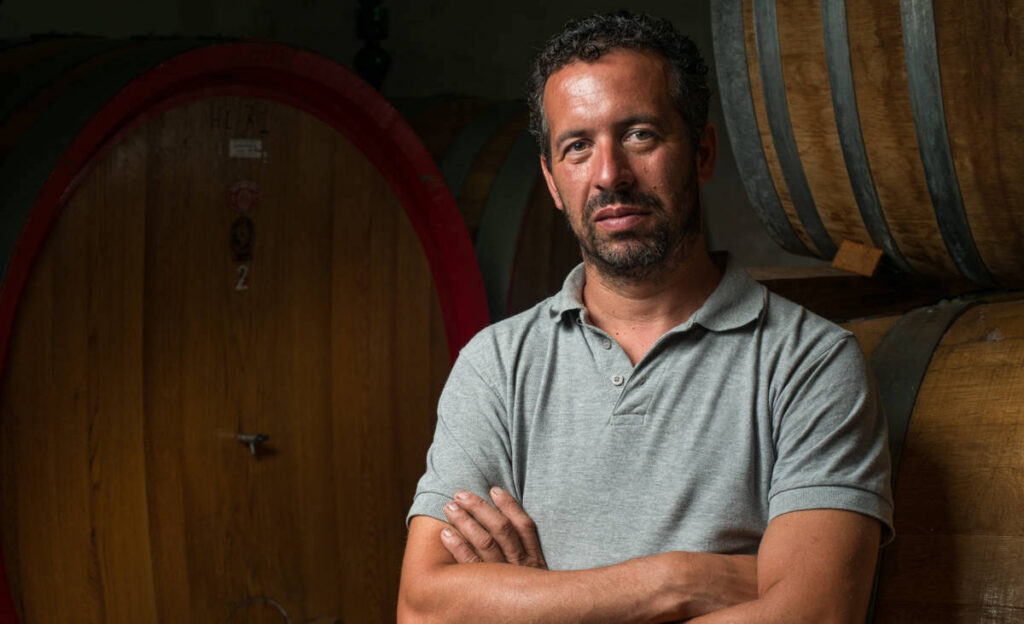
San Lorenzo, Rosé 2017
14% – Warm and dry but well managed, excellent ripeningBlood orange and medicinal herbs, ripe cherry and hay, violet and cedar. Rich not only in terms of recall but also of extracts: it is a full, rounded, three-dimensional wine, which takes up more space than the others without this being an embarrassment. In fact, it stands out due to its striking balance between power, depth, alcoholic heat and freshness, as well as flavour. It is mouth-watering, rich and satisfying with a finish exuding warm and enthralling fruit.
It is so rich and intense that it is somewhat predictable as regards its development of flavour, even if it is most certainly well balanced. A colourful note that is perhaps worth mentioning: after 2 days (each wine was tasted over a period of about 36 hours), it was the 2017 bottle in which the greatest amount of wine remained, a sign of a lower number of tastings than the others.
San Lorenzo, Rosé 2018
14% – A good vintage, cold and rainy at the end of the season, in SeptemberThe one with the least intense colour. Currant and cherry leaves, orange and mandarin marmalade, then again currants and wild strawberries. Refined, complete tasting, everything seems to be in its place and for the pure enjoyment of imbibing. The acidity is refreshing, a hint of warmth, on the central palette it is mouth-watering without exaggerating. Sound but not vertical, rigorous without lacking generosity. Simply marvellous, each sip recalls the next without ever tiring of it. What elegance.
Getting to 2018 after 2017 was quite a rollercoaster: so much so, the previous one was *everything* but this plays a game of subtraction, nuances and Tuscan elegance. In terms of scoring, just behind the 2016 Rosé, in terms of preference, it’s the one I would take home.
San Lorenzo, Rosé 2019
14% – An excellent vintage, all good from spring to harvest, excellent production, one to rememberThe attack is quite delicate and expresses initial floral notes, the only one out of the 6, and only after fruity notes. The nose is a benchmark: dog rose before violet, citrus tones, small red fruit and finally notes of wheat fields, freshly cut grass and summer in general. It is elegant, deep, characterised by a warmth that is a distinctive feature for a full, very flavoursome and at the same time refined taste of a pleasing and convincing Montalcino elegance. The finish refreshes the palate, with the usual full-bodied nature of the Rosato di San Lorenzo.
A fantastic wine, slightly leaner than the previous one but no less energetic. Out of the 3 that I preferred (in order: 2018, 2016, 2019), already achieved today, let’s wait and see what will happen and if it is close to the suggestions of the other 2 (I would say so) but today was already very enjoyable to say the least.
by Jacopo Cossater
Source: http://www.intravino.com/primo-piano/montalcino-tutti-i-rosato-di-san-lorenzo-fino-a-qui/
-
2020 Harvest
The year began with a mild and dry winter and continued with a very warm March which made the vines sprout very early. At the beginning of April, with most of the buds out, an anomalous cold wave arrived, culminating in a dusting of snow and three mornings of sub-zero temperatures, causing considerable damage to the buds. In fact, it froze almost half of the buds which were then reborn but unfortunately without grapes, immediately compromising production.
April and May, rainy but also quite warm, allowed the vines to recover from the stress of the cold and to grow well, flowering in early June. A typical summer ensued, with some peaks of heat but not excessive, little rain until August, veraison began at the end of July and ended around 20 August, far earlier than in previous years.
Early September with some heavy rains followed by hot and dry days meant excellent ripening, the harvest took place for the first time in Sanlorenzo in September. The date of the harvest was 28 and 29 September. The very high quality wines have nice acidity and an alcohol content below the average of recent years, with a good and pleasant framework, a style which could remind us of some harvests of the last century.
-
New Labels

Whenever faced with a graphic project, the first question to ask is what one wants to say and to whom. So the colours, the graphic representations and the characters of the texts will be studied, created and chosen following a careful analysis, to make them relevant and correlated to the founding message and the cognitive ability of the final user.
A detailed study of the wine market has led us to specialise in the creation of labels, aware of the demand of different markets, of different customers, and of the different sales channels of wines worldwide.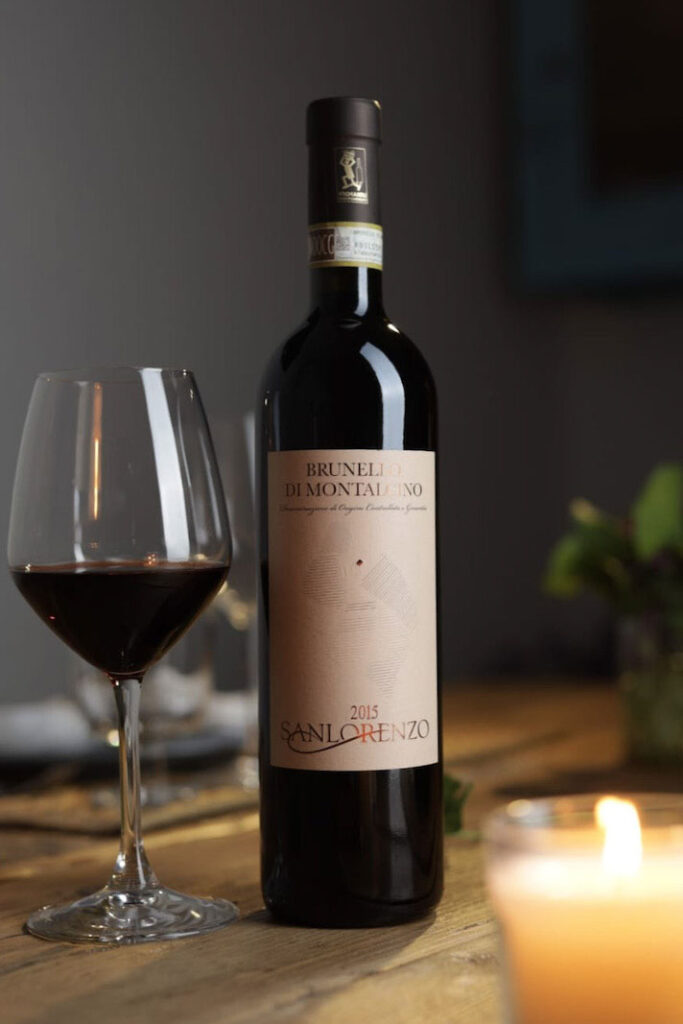
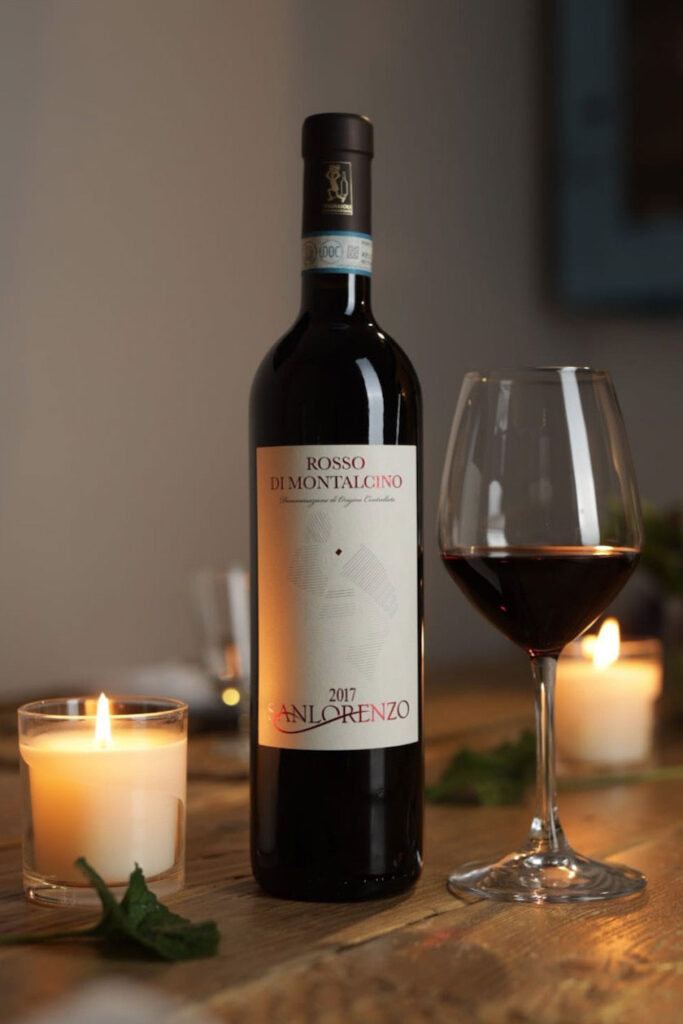
Concept of visual identity
Sanlorenzo is a winery strongly rooted in the Montalcino territory, a producer of fine wines, exported all over the world, and managed by two brothers who have been running the winery together for years, personally “getting their hands dirty” to guarantee the perfect result of these very high quality wines.
The idea of creating a new label stems from the need to have a graphic line that in some way talks about the wine, the winery’s philosophy, what it is like to be part of such an important denomination and the craftsmanship of the product.
We started off by listening to the words of the owner Luciano Ciolfi, who told us the story of his winery, whereby progress over time is marked by planting new vineyards, which increase its wine production decade after decade.
The wine comes from the soil, from the vines and from the hands of those who care for them month after month, season after season. We therefore decided that the true stars of the label should have been the vineyards, with the slope of their rows and stating their age, in order to tell the story of the winery after the vines were planted.Old Labels
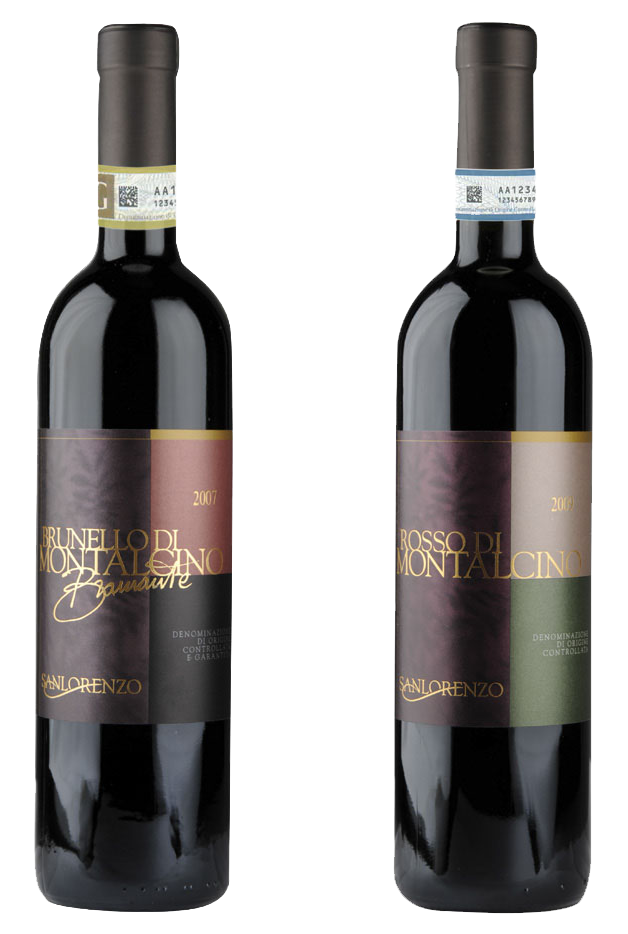
New Labels
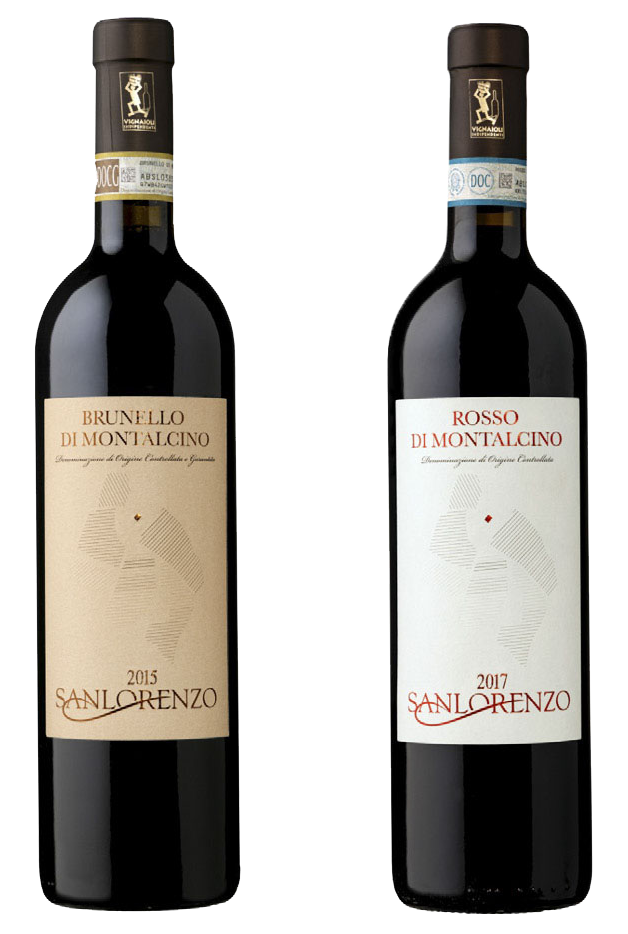
The Vines
Corporate Property
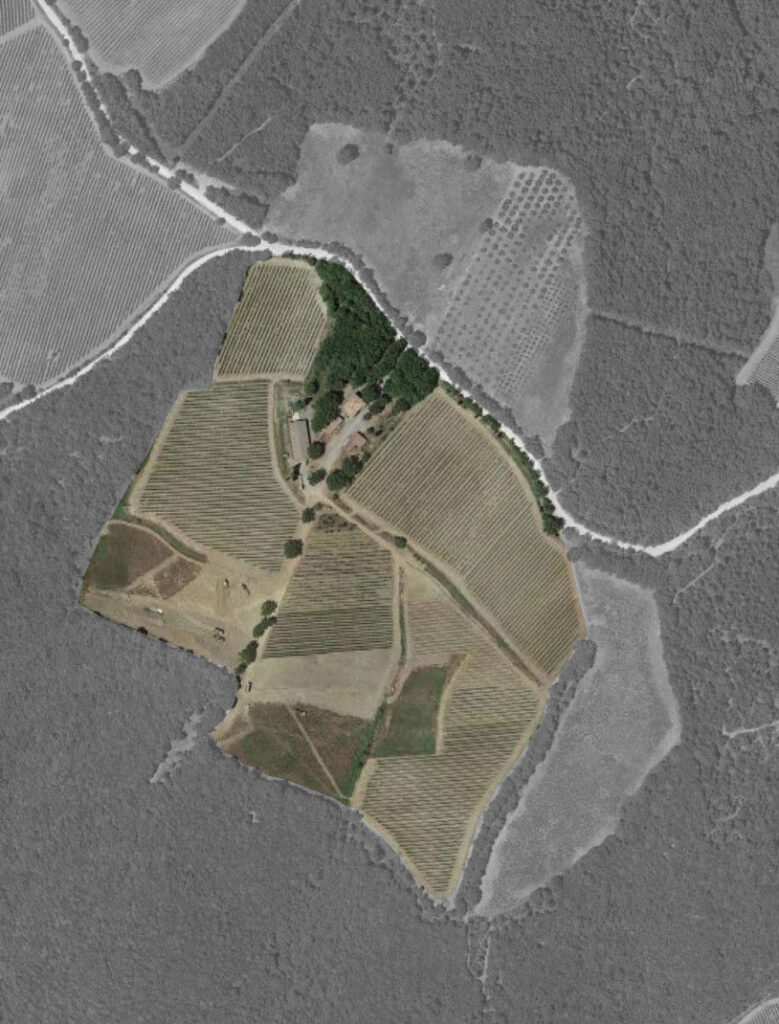
Highlighting the Vines
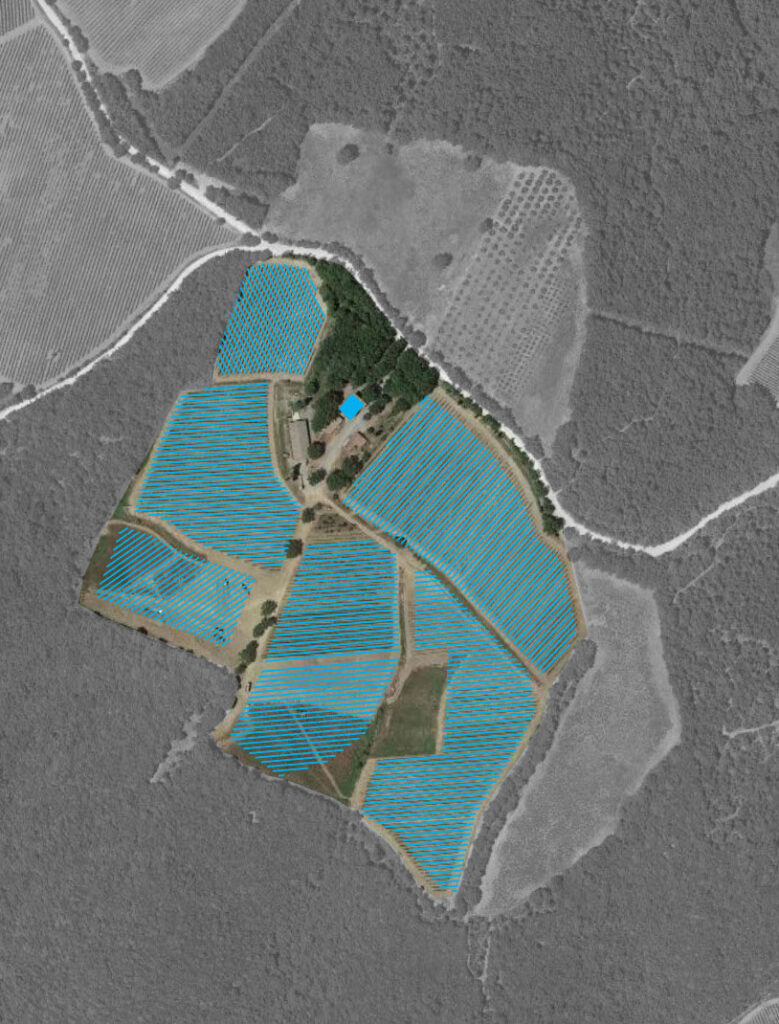
Extracting the Vines
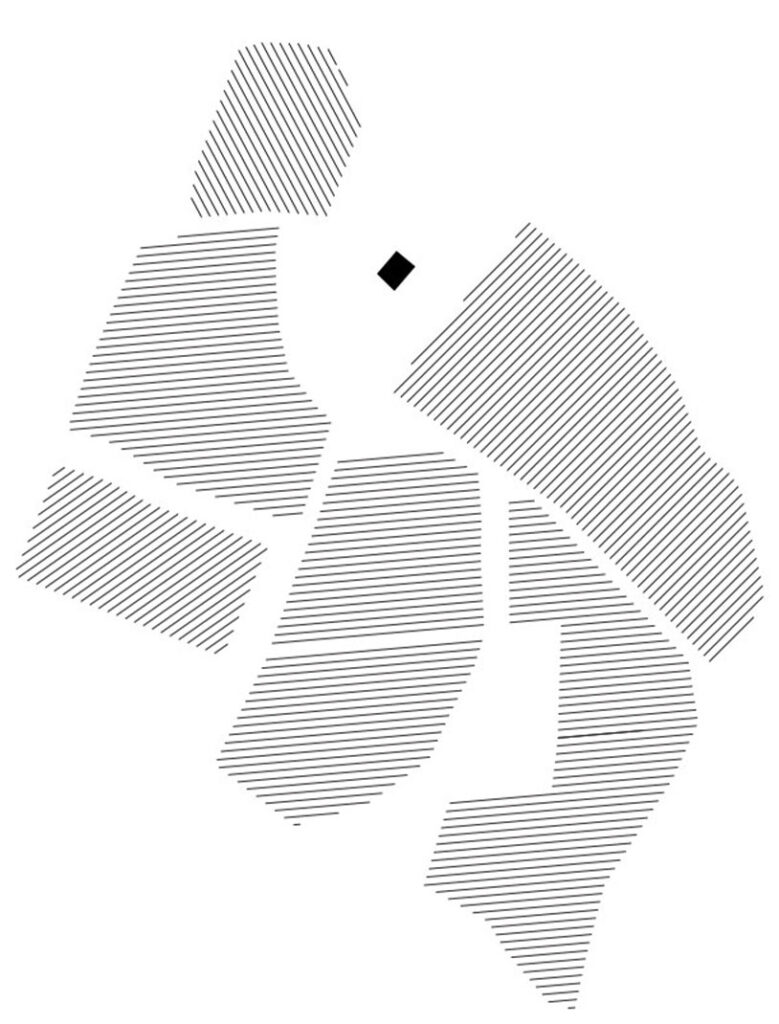
Colours depending on when planted

-
Harvest 2019
2019 was an exceptional harvest both in quantity and quality, an average rainy winter was followed by a hot and dry March and April, the vines sprouted well and grew quickly. May was very rainy and the plants slowed down growth, then in June a decisive change of course with two dry and hot months. So that the grapes grew well and at the right times, the beginning of the veraison was in the first days of August to be concluded in late August. The warm but not too hot September weather with some rains contributed to the good ripening, the harvest was on October 5th and 6th.
Podere Sanlorenzo, 280
53024 Montalcino (Siena) Italy
Mob. +39 339 6070930
Email: info@poderesanlorenzo.net
Skype: luciano.ciolfi
PEC sanlorenzomontalcino@pec.it

